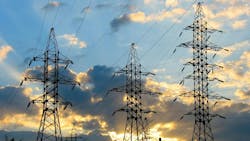Duquesne Light Expands Use of Dynamic Line Ratings to Strengthen Grid and Support Clean Energy Goals
Pittsburgh-based Duquesne Light Company (DLC) is moving forward with a significant expansion of advanced grid-monitoring technology aimed at increasing transmission capacity and preparing its infrastructure for future energy needs and climate challenges. In partnership with LineVision, a provider of overhead line-monitoring systems, DLC will deploy Dynamic Line Rating (DLR) technology across seven additional transmission lines throughout its service territory.
This initiative builds on earlier deployments of DLR technology, which began in 2021. According to DLC, past installations have demonstrated up to a 25% increase in transmission line capacity—an outcome that allows the grid to carry more electricity, particularly from renewable sources, while maintaining reliability.
The expanded deployment is supported in part by a $19.7 million grant from the U.S. Department of Energy (DOE), awarded to DLC for grid modernization projects. The utility plans to invest a total of $21 million over the next five years as part of the broader DOE initiative, which includes grid edge computing and other advanced technologies designed to enhance resilience and enable greater decarbonization.
“Expanding our use of LineVision’s DLR technology throughout our service territory is essential to strengthening our infrastructure and preparing our assets for the evolving energy landscape and impacts of extreme weather,” said Brian Guzek, vice president of corporate strategy at DLC.
DLR systems work by monitoring real-time conditions—such as conductor temperature, sag, and weather impacts—to calculate safe and efficient transmission capacity limits. This data can help utilities operate lines closer to their true thermal limits without compromising safety, a key advantage as power systems grow more dynamic with the integration of intermittent renewable energy sources.
In addition to increasing capacity, the DLR system will support DLC in monitoring conductor health, analyzing extreme weather impacts, and improving the overall resilience of the transmission network.
The use of DLR is gaining traction nationally as utilities look for ways to expand grid capacity without building new lines—an increasingly important strategy amid rising electricity demand.
